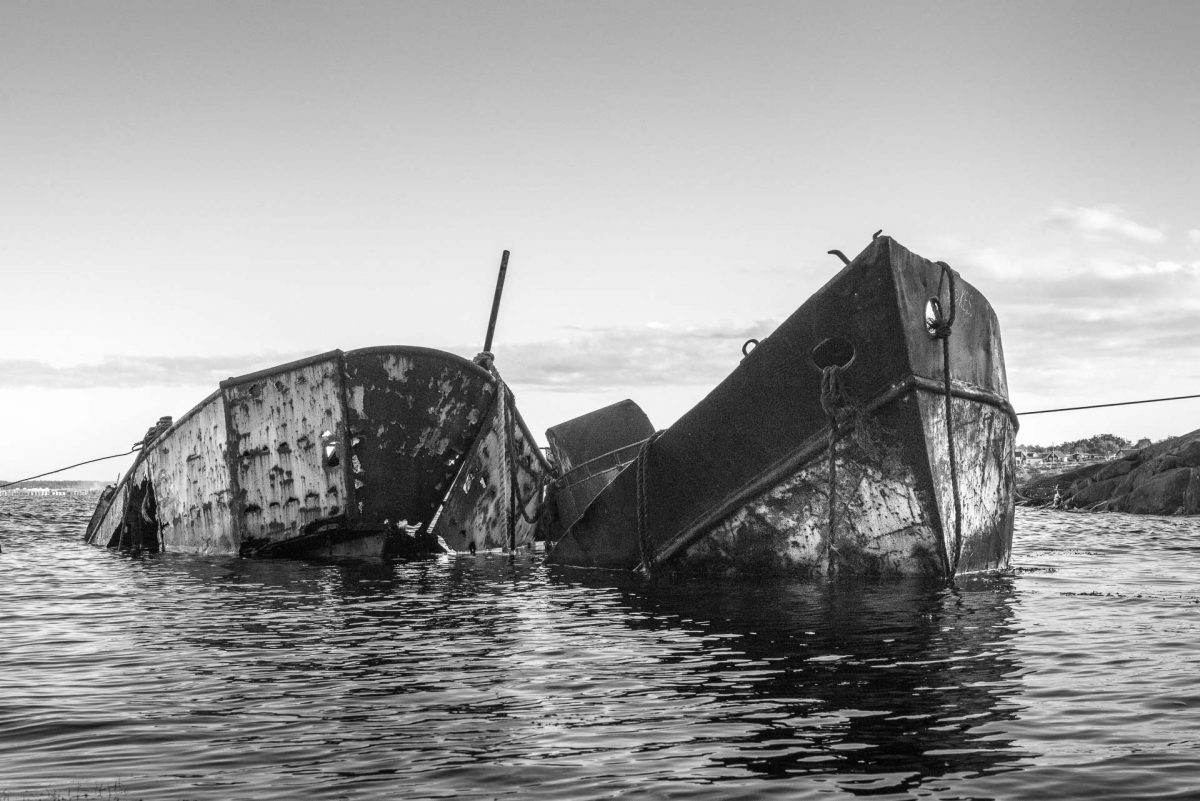
Blekinge archipelago is the only archipelago along the Swedish south coast. The area offers a fabulous nature seething with life in a restful way. Remains testifies about glory days and dramatic changes. Small scale fishing and farming have been complemented by industrial activities. Granite from Bleking is found in several European construction projects. The extensive military activities since the 17th century have had a huge impact.
Living on islands requires good communications over the sea. Today, there are bridges between the major islands, but the traditional transportation mean is by archipelago boats. Two of these traditional white steam slurps together with two smaller boats and machines are found on the “ship cemetery” at Hagnudden on Tjurkö. The decayed hulls are laying rusting in the forest with Karlskrona harbour in the background.
The boat furthest up in the forest is the steam slurp ”Carl” (17,5 m long and 4,5 m wide) converted to a motor ship, was built 1911 in Kristianstad by Ljunggrens Verkstad with the initial name “Wämöparken I”. The boat trafficked the route Trossö – Wämö originating from Tallebrygan where the prison is located. She was sold already in 1912 to Karlskrona Ångslups AB and was renamed to “Carl”. The boat was converted to a motor ship in 1952 equipped with a Volvo Penta motor. “Carl” vas in operation until the 1970ies when it was laid up at Tjurkö.å den lades upp på Tjurkö.
In the water’s edge lays the steam slurp “Trossö” (21,8 m long and 5,1 m wide) converted to a motor ship was built in 1923 by Bergsund’s Mekaniska Verkstad in Stockholm. The boat was delivered to Karlskrona Ångslups AB the same year and was in operation to 1941 when she was sold backto Stockhholm (trafficked the route Vitså – Märsgarn in the southern part of Stockholm’s archipelago. The boat returned to Karlskrona in 1962 when she was converted to a motor ship and trafficked the route Karlskrona (Skeppsbron) – Tjurkö – Sturkö. Sometime in the 1960ies she was laid up at Tjurkö.
It is not easy to find the place as there are no roads and signs. It is hard to reach and requires some climbing over high stone fences. It has got a cult status and is frequently visited by nostalgic and romantics. Some leaving traces like colourful graffiti. We will return to experience the place under different lighting conditions.
